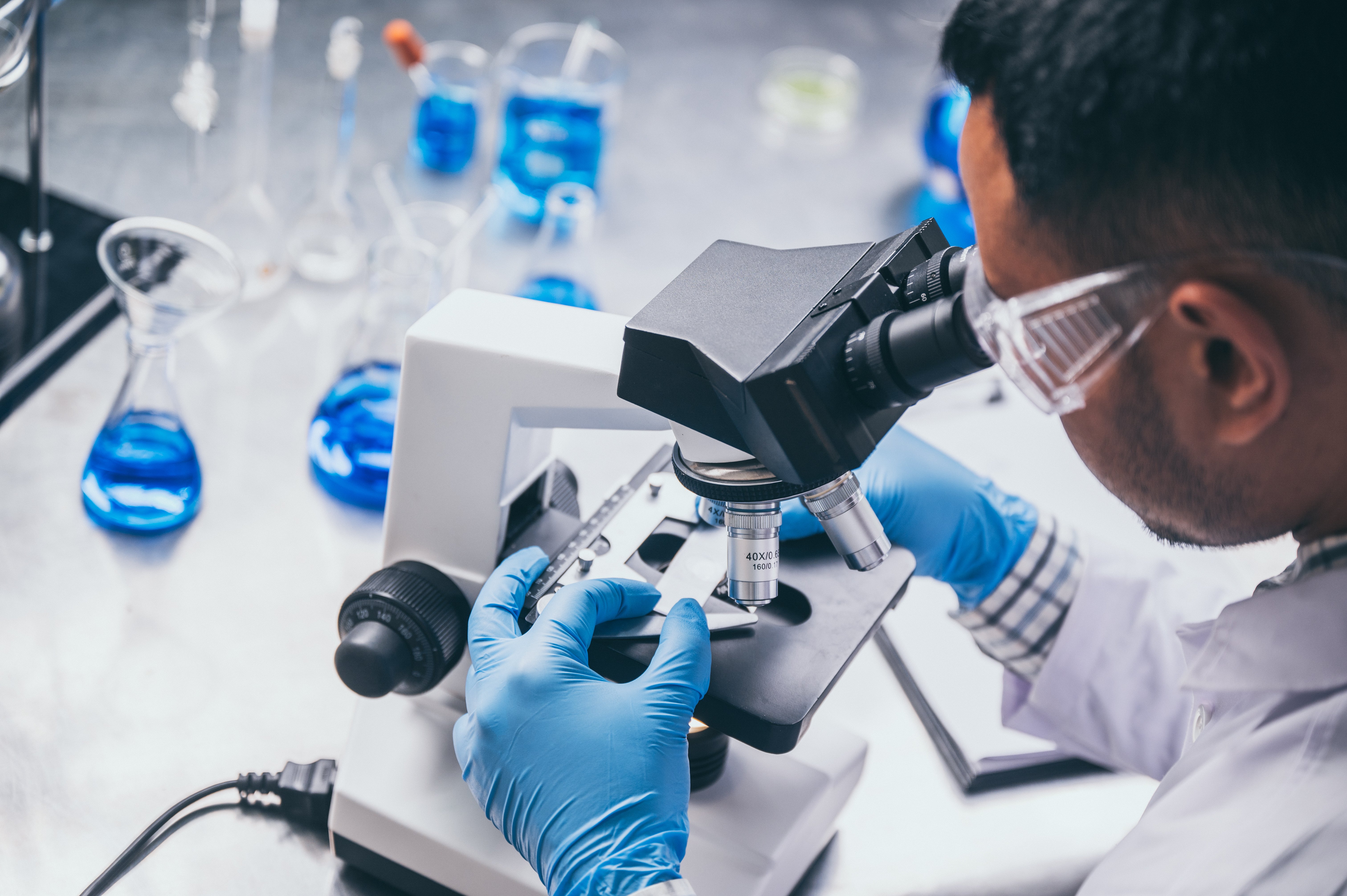2020 Biological & Nanoscale Technologies Research
July 08, 2020

2020 may have brought plenty of new challenges as COVID-19 required researchers to adapt, but the research never stopped for our Biological & Nanoscale Technologies team. Take a look at some of their recent work and tap or click on each title to find the full publication.
Read also: Aircraft Decontamination Team Fights COVID-19
Silanized Liquid-Metal Nanoparticles for Responsive Electronics
Zachary J. Farrell, Carl J. Thrasher, Alex E. Flynn, and Christopher E. Tabor
ACS Applied Nano Materials 2020 | DOI: 10.1021/acsanm.0c01056
Room-temperature liquid-metal particles are a burgeoning material platform for stimuli-responsive electronics, self-healing circuitry, stretchable/flexible conductors, drug delivery, and wearable devices. The ability to chemically tune the nanoscale surface oxide of liquid-metal particles is critical to these applications. To this end, a method of silanizing liquid gallium alloy particles has been developed. The benefits of alkoxysilane ligands are demonstrated by orthogonal functionalizations to produce chemically diverse, multifunctional hybrid liquid-metal nanoparticles. Additionally, architected stretchable conductors, called polymerized liquid-metal networks, were fabricated using hitherto inaccessible chemistries with enhanced electromechanical performance. These advancements have downstream implications for particle processing, device fabrication, long-term stability, and functional behaviors of liquid-metal particle systems.
Graphene-Based Electrolyte-Gated Field-Effect Transistors for Potentiometrically Sensing Neuropeptide Y in Physiologically Relevant Environments
Ahmad E. Islam, Rhett Martineau, Cameron M. Crasto, Hyunil Kim, Rahul S. Rao, Benji Maruyama, Steve S. Kim, and Lawrence F. Drummy
ACS Applied Nano Materials 2020 3 (6), 5088-5097 | DOI: 10.1021/acsanm.0c00353
Wearable electronics with real-time biosensing capabilities are very important for future applications in monitoring and augmenting human health and performance. Graphene-based potentiometric sensing offers a route for developing wearable sensors that can selectively sense biomarkers in biofluids such as sweat and saliva. This manuscript studies the sensitivity of potentiometric sensors made with graphene-based electrolyte-gated field-effect transistors (GFETs). Selectivity in the sensor toward a nanoscale biomarker, neuropeptide Y (NPY), was achieved by functionalizing graphene with a peptide-based biorecognition element. The sensors were then characterized extensively by varying concentrations of NPY in a complex medium containing artificial sweat with varying ionic concentrations and pH. This medium, therefore, emulated the response of the sensor to biomarkers in a physiologically relevant condition approaching a real-world scenario. Analysis using Gouy–Chapman–Stern theory for the liquid–solid interface at nanoscale highlighted important features of potentiometric sensing such as log-linear response and charge screening effects in GFET sensors.
Disulfide Crosslinked Hydrogels Made From the Hydra Stinging Cell Protein, Minicollagen-1
Sanaz Farajollahi, Patrick B. Dennis*, Marquise G. Crosby, Joseph M. Slocik, Anthony T. Pelton, Cheri M. Hampton, Lawrence F. Drummy, Steven J. Yang, Meredith N. Silberstein, Maneesh K. Gupta, and Rajesh R. Naik4*
Front. Chem. 2020 | DOI: 10.3389/fchem.2019.00950
Minicollagens from cnidarian nematocysts are attractive potential building blocks for the creation of strong, lightweight and tough polymeric materials with the potential for dynamic and reconfigurable crosslinking to modulate functionality. In this study, the Hydra magnipapillata minicollagen-1 isoform was recombinantly expressed in bacteria, and a high throughput purification protocol was developed to generate milligram levels of pure protein without column chromatography. The resulting minicollagen-1 preparation demonstrated spectral properties similar to those observed with collagen and polyproline sequences as well as the ability to self-assemble into oriented fibers and bundles. Photo-crosslinking with Ru(II)(bpy)32+ was used to create robust hydrogels that were analyzed by mechanical testing. Interestingly, the minicollagen-1 hydrogels could be dissolved with reducing agents, indicating that ruthenium-mediated photo-crosslinking was able to induce disulfide metathesis to create the hydrogels. Together, this work is an important first step in creating minicollagen-based materials whose properties can be manipulated through static and reconfigurable post-translational modifications.
Defect Engineering of Graphene Using Electron-beam Chemistry with Radiolyzed Water
Islam, Ahmad & Susner, Michael & Carpena-Núñez, Jennifer & Back, Tyson & Rao, Rahul & Jiang, Jie & Pachter, Ruth & Tenney, Samuel & Boeckl, John & Maruyama, Benji.
Carbon 2020 | DOI: 10.1016/j.carbon.2020.04.098
Defect engineering of graphene is attractive for a wide range of applications. Here, we present a mask-less, resist-free, and fully reversible process to engineer defects in graphene using electron-beam (e-beam) chemistry with radiolyzed water. This process was performed inside a variable pressure scanning electron microscope by generating radiolysis products using reactions between the e-beam and water vapor, which in turn reacted with the graphene at the location of the probe. These reactions enabled controlled chemistry on the graphene surface at a resolution of ∼60 nm and hence created defects in precise locations defined by the e-beam. Detailed characterization and theoretical analyses suggested the presence of sp³-type defects, the density of which was tuned by varying the e-beam dose. In addition, these sp³-type defects were cycled in and out of graphene by alternating e-beam chemistry and thermal annealing. This reversibility promises future applications of e-beam chemistry in reconfigurable plasmonics and electronics.
Read also: Latest Research From Our Integrative Health & Performance Sciences Team
Questions? Contact us here. Connect with us on Facebook, Twitter, LinkedIn, and Instagram.
